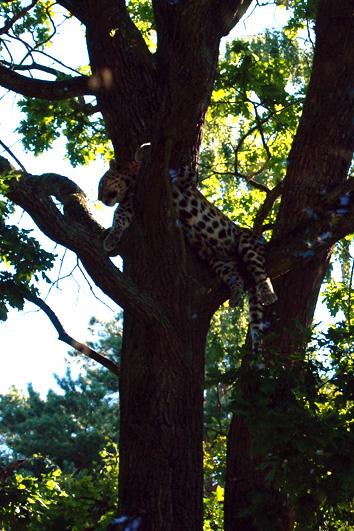Results
Literature review
A total of 36 articles were reviewed.
None of the articles investigated resource usage and preference. The major focus of topics in the reviewed articles was on different types of environmental enrichment and how enrichments affect abnormal behaviours such as pacing and other stereotypes. All articles highlighted problems with keeping felids in zoos with optimal welfare. Almost all research were behavioural studies but some combined behavioural studies with for instance hormonal measurements.
The sample sizes in the studies were overall small and t here was a predominance of studies made of large felid species.
Examination of practiced husbandry
For the seven species of felids used in the behavioural study four husbandry guidelines are used, for tigers, leopards, cheetahs and Pallas's cats, and therefore these four guidelines were reviewed in this section of the thesis.
Although they covered such different felid species these four husbandry guidelines varied greatly in scope but were similar in content when it came to housing, enclosure design, enrichments and feeding. All but one of the guidelines were six or seven year’s old and when references were cited these were even older, the majority of them from the 1990’s.

Observational study
The behavioural observations showed that all felids summarised together were mostly resting or inactive during the observations, although there were individual differences. Stereotypic pacing occurred in all species except the Pallas’s cats. They were on the other hand to a higher degree in hiding.
All felids pooled together used some kind of resource in their enclosures 42 % of the observed time. High perches were the most used resources overall. Amur leopards chose elevated resources over hiding place almost every time. All females summarised used hiding places more than males and Pallas’s cats used hiding places most of all species. The usage of hiding places changed with time of day but not usage of the other resources.
Approximately two thirds of the individuals in the study were kept in enclosures where not only structures gave access to an elevated resting place, but the ground level varied into areas with a distinct elevation above other parts of the enclosure and the public viewing points. By all animals these areas were used 22 % of the observed time but the Pallas's cats used them more than twice as much.
Number of zone changes within the enclosures were measured for each individual. Males and cheetahs were moving around most. All the cheetah males frequently patrolled their enclosures unlike the snow leopards which were more seldom observed moving around. Each individual had one or a few favourite spots which all of them were resting places. The socially held felids sometimes shared resting place but also alternated in using the same spot.
Overview or cover are important for the felids but it was hard to distinguish what factors were decisive for the choice of resting place. Other factors might therefore also be important, such as soft grass or bedding, the materials ability to retain warmth or cold, weather sheltering, neighbouring species and distance to visitors. All this needs to be taken into account when designing enclosures for the felids.
Responsible for this page:
Director of undergraduate studies Biology
Last updated:
06/06/16
